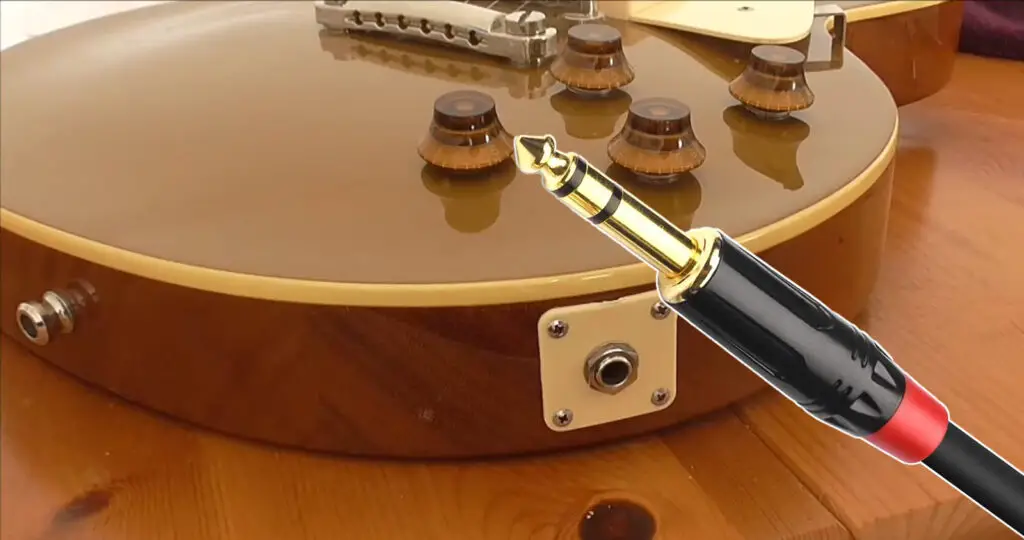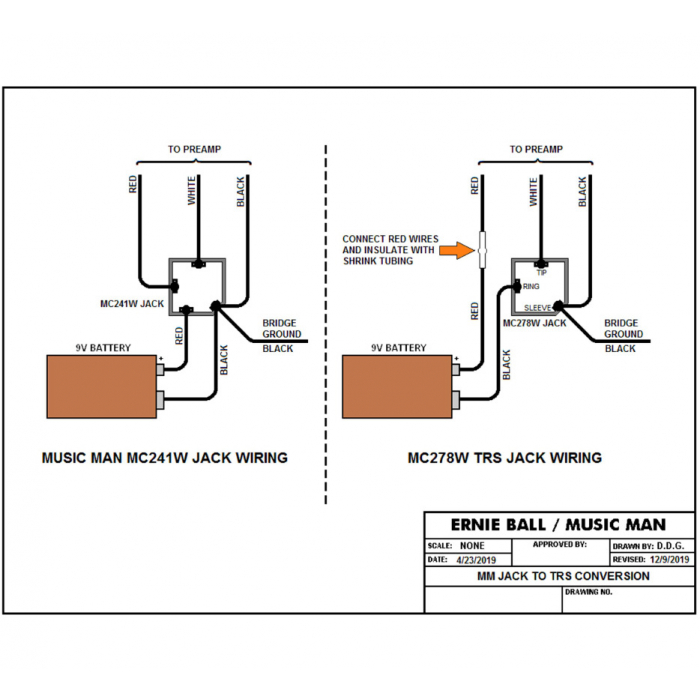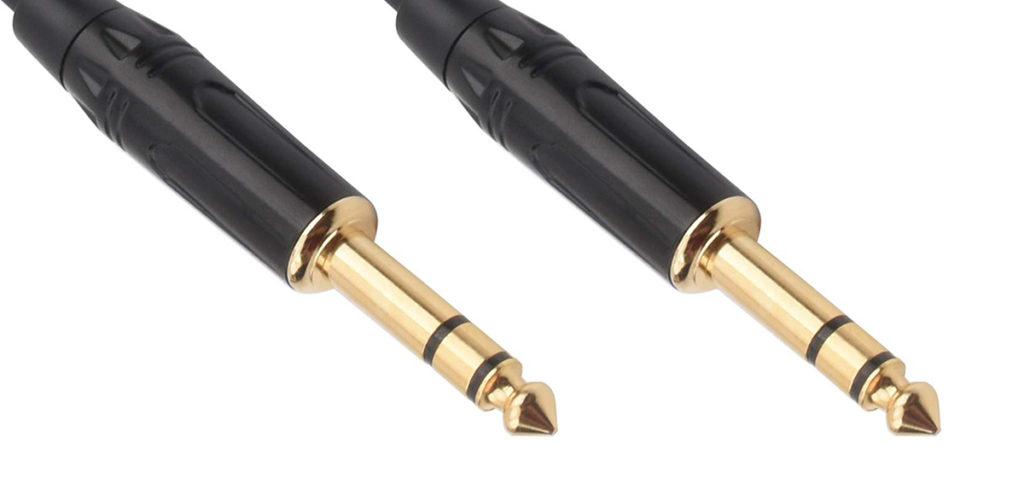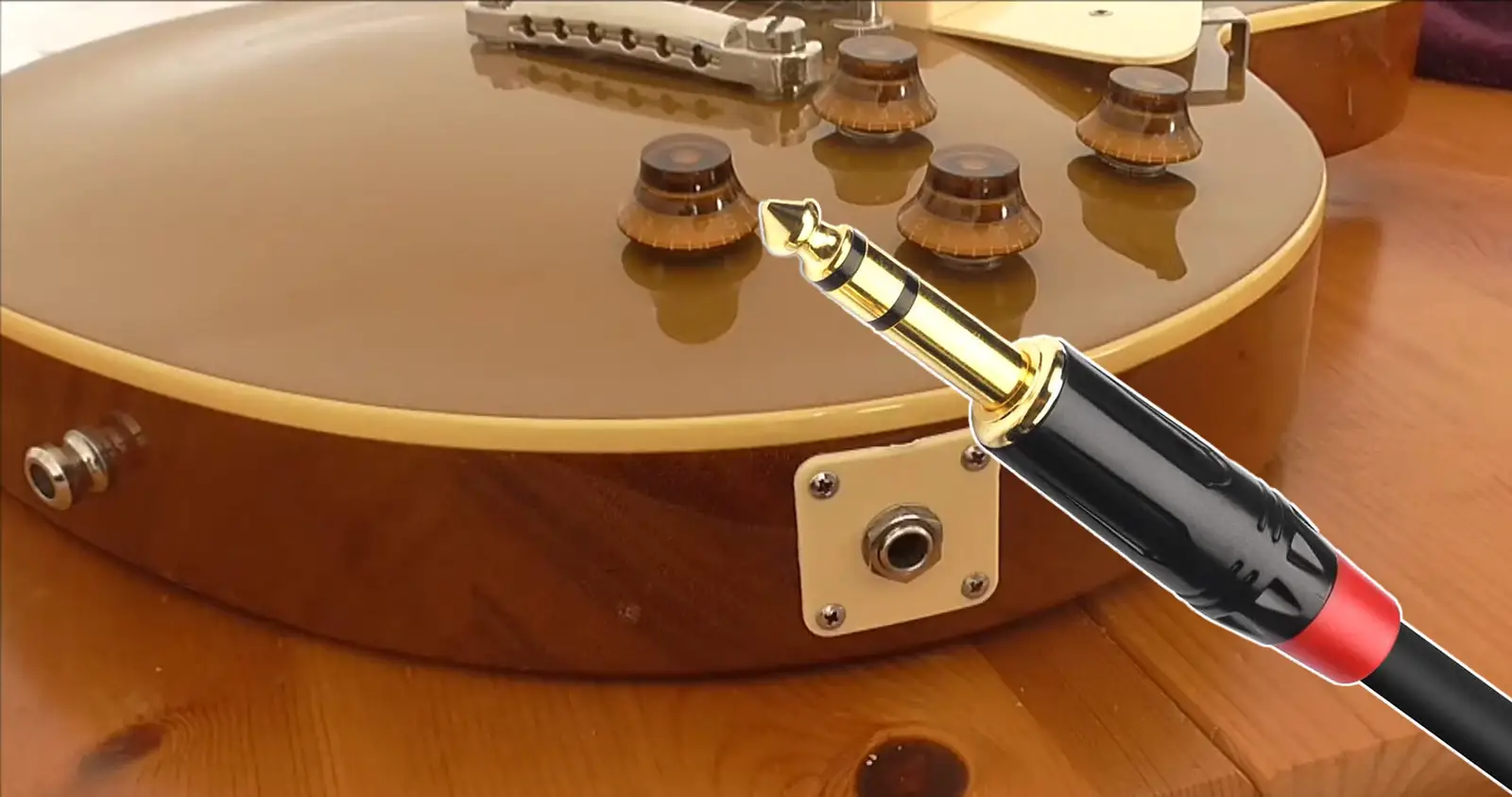In the world of guitar gear, cables might seem like a simple, straightforward topic. But dig a little deeper, and you’ll find there’s more to them than meets the eye.
One common source of confusion is the difference between mono and stereo cables, and more importantly, which one is suitable for your guitar setup.
Can I use stereo (TRS) cables for guitar?
You can use a stereo (TRS) cable for a guitar, but it will only carry a mono signal unless the guitar or effects are designed for stereo output. Some guitars with active electronics may also use a TRS cable to switch on the battery.
In this article, we’ll take a look into the world of guitar cables, breaking down the differences between mono and stereo cables, how they work, and when to use each. Understanding these nuances can help you make the most of your equipment and advance your sound to the next level.

Can I Use Stereo (TRS) Cable For Guitar?
You can use a stereo (TRS, or Tip-Ring-Sleeve) cable for a guitar, but it won’t function as a stereo cable in this context.
The majority of guitars output a mono signal, which means they only require a TS (Tip-Sleeve) cable. If you use a TRS cable, it will still carry the mono signal of your guitar without any issue. It won’t damage the guitar or your amplifier.
In some cases, a TRS cable is needed. For example, some guitars with active electronics, such as certain models of Music Man and Ibanez, use a TRS cable to switch on the battery only when a cable is plugged in. This helps save battery life when the guitar is not in use.

Also, some guitar effects pedals use a TRS cable for expression or control functions.
Remember that if you’re intending to utilize stereo effects, you’ll need a stereo source (like a stereo effects pedal), a stereo cable, and a stereo amplifier or two separate amplifiers. A standard guitar alone will not produce a stereo signal.
Should Guitar Cables Be Mono Or Stereo?
The vast majority of guitars and guitar amplifiers are designed for mono operation, which means they only require a TS (Tip-Sleeve) cable, also known as a mono cable. This is because a standard guitar only produces a mono signal – a single channel of audio.
Stereo cables (TRS – Tip-Ring-Sleeve) are usually not necessary for typical guitar use unless you have a specific need for them.
Unless you have a specific need for a stereo cable due to your equipment’s requirements, you should use a mono cable for your guitar.
If you are a beginner at guitar, you should be more worried about using a straight cable vs. an angled cable.
What Is The Difference Between Mono And Stereo Cables?
Mono and stereo cables are both types of audio cables that are used to transmit audio signals.
The main difference between mono and stereo cables is that mono cables carry a single audio signal, while stereo cables carry two audio signals. This means that mono cables can only produce a single sound, while stereo cables can produce two sounds that are separated into left and right channels.
A mono cable carries a single channel of audio. It uses a TS (Tip-Sleeve) connector, with two contact points: the tip and the sleeve. The tip carries the audio signal, and the sleeve serves as a ground.
A stereo cable, on the other hand, carries two separate channels of audio (left and right). It uses a TRS (Tip-Ring-Sleeve) connector, with three contact points: the tip, the ring, and the sleeve. The tip carries the left audio signal, the ring carries the right audio signal, and the sleeve serves as a ground.
This type of cable is often used with headphones, where separate audio channels are needed for each ear.
This idea also applies to XLR cables.
Here is a table that summarizes the key differences between mono and stereo cables:
| Mono Cable | Stereo Cable | |
| Channels of Audio | Single channel | Two separate channels |
| Connector Type | TS (Tip-Sleeve) | TRS (Tip-Ring-Sleeve) |
| Contact Points | Two (Tip and Sleeve) | Three (Tip, Ring, Sleeve) |
| Typical Use | Standard guitars, mono amplifiers | Headphones, stereo systems, certain effects pedals |
| Effect on Guitar | Transmits mono signal | Transmits mono signal unless used with stereo equipment |
One thing to note is that these cables look very similar, with the main visual difference being a second band on the plug of the stereo cable.
It’s also important to remember that you need stereo sources and stereo outputs to fully utilize a stereo cable; if you use a stereo cable with a mono source or output, it will still only carry a mono signal.

Conclusion
Understanding the differences between mono and stereo cables is a key part of optimizing your guitar setup and ensuring the best possible sound.
While the standard guitar rig requires only a mono cable, there are instances where a stereo cable may be necessary or beneficial. It all depends on your specific gear and your intended use.
Your choice of cable should be driven by the requirements of your equipment and the type of sound you want to achieve. Keep in mind there are many factors that influence the should, like the capacitance from the length of the cable.
A standard guitar and amplifier setup is designed for mono operation, but stereo setups can open up new possibilities for sound exploration, particularly when using certain effects pedals or guitars with active electronics.
The right cable for you is the one that best serves your sound and your gear. By understanding these subtle but important differences, you can make more informed choices and unlock the full potential of your music.


